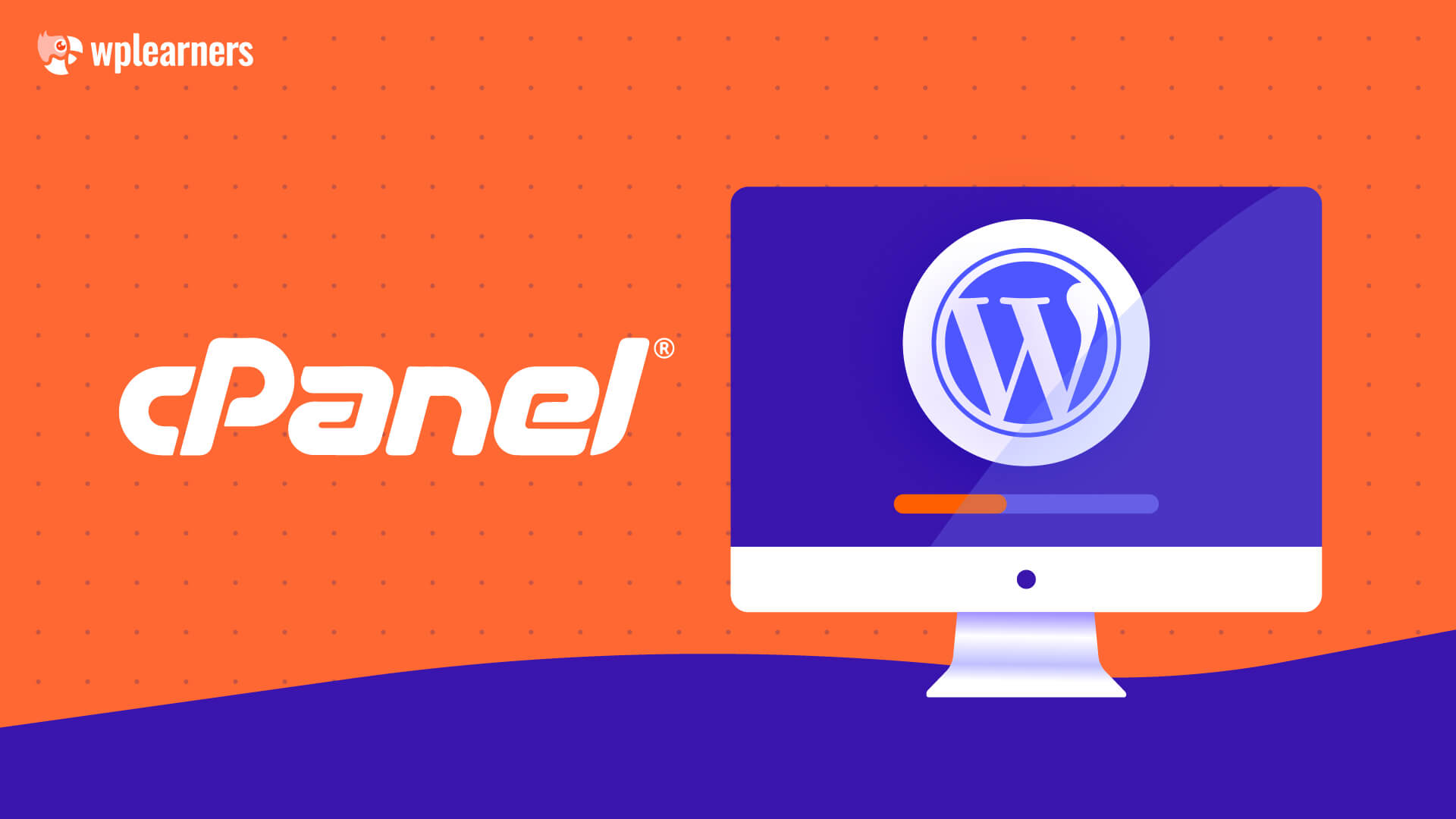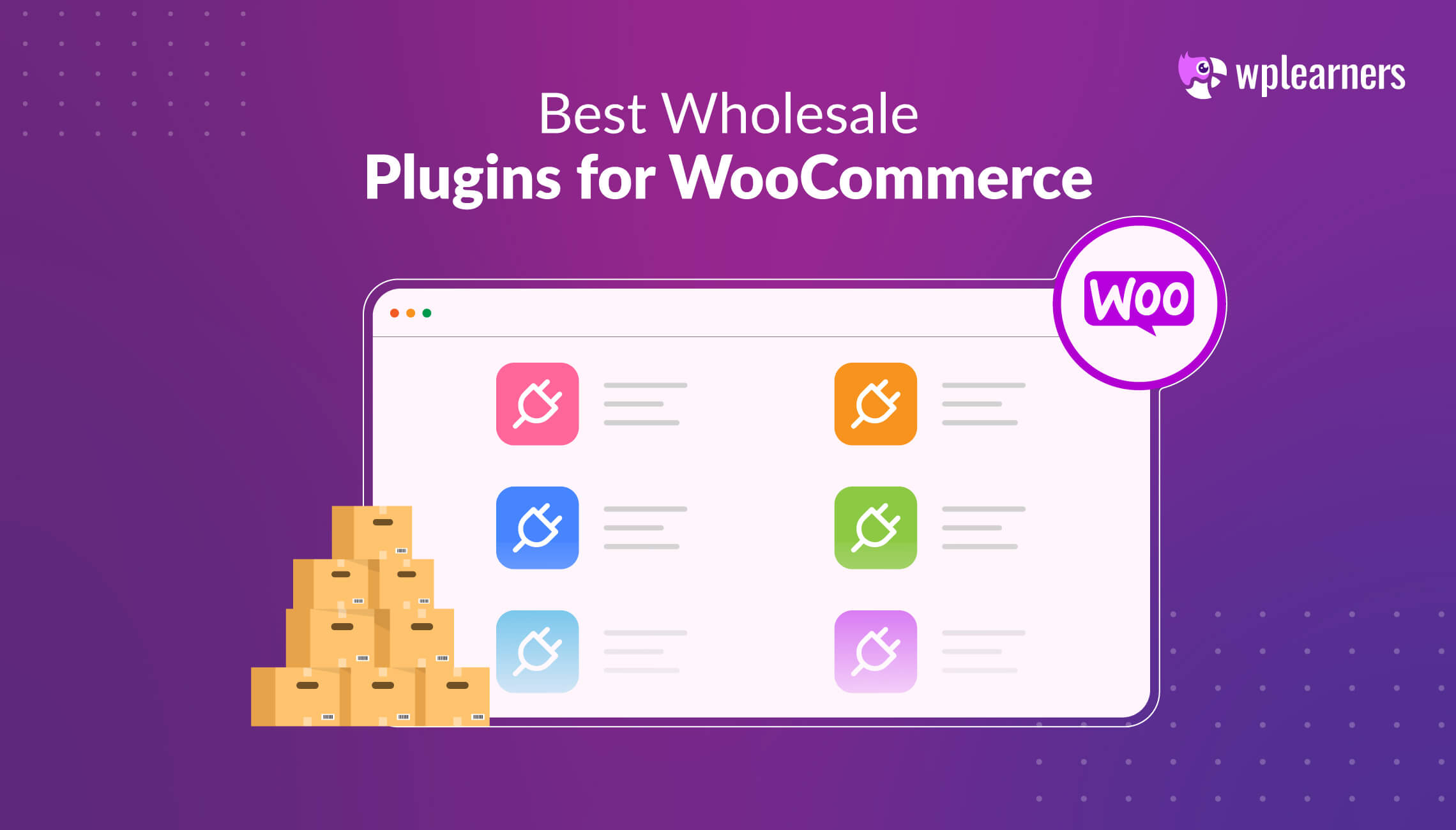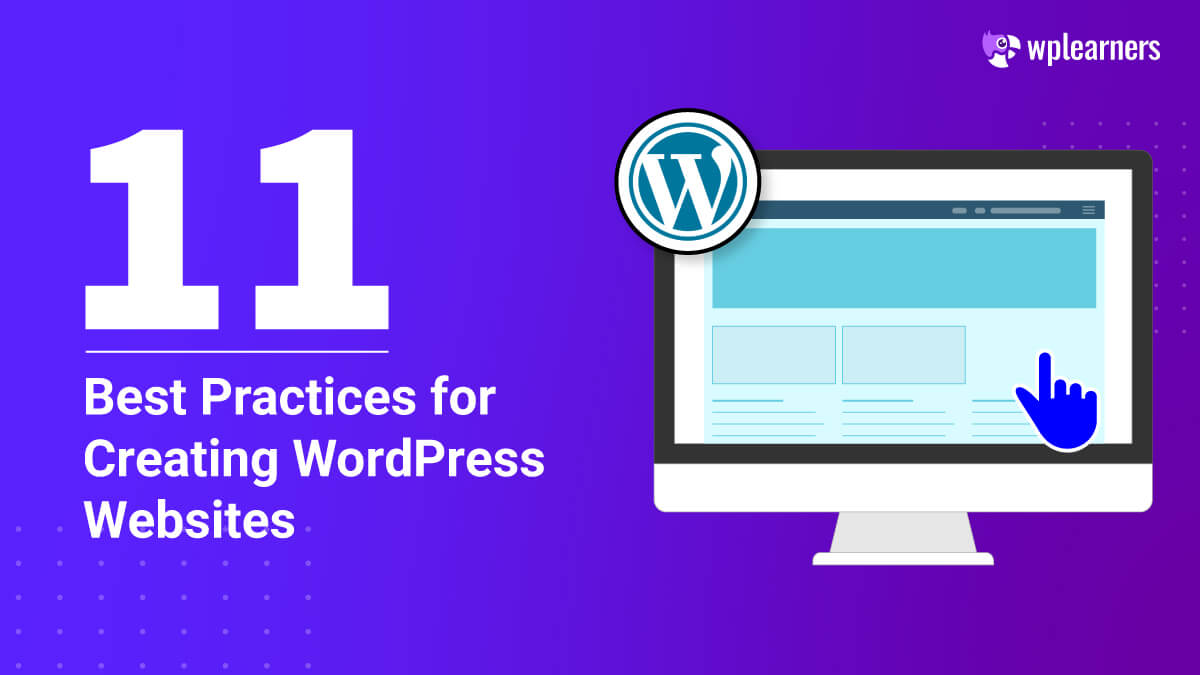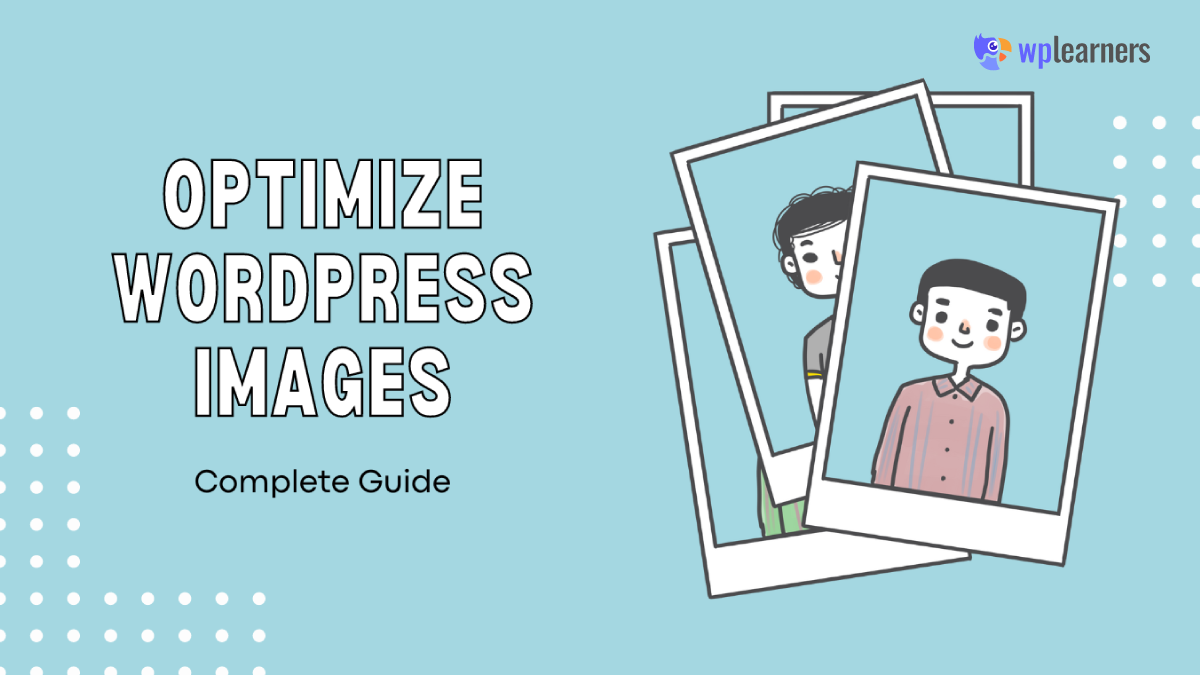WP (WordPress) is a popular content management system. It has become the world’s most popular solution because of its simplicity of use, countless themes and plugins, and strong community support. WordPress is used for various purposes, including simple blogs and sophisticated websites.
Controlling your web hosting server has never been easier thanks to cPanel, a user-friendly web-based management panel. However, managing your websites and server requires technical expertise if you don’t have cPanel. With cPanel, you don’t need to know anything about programming to make changes.
You will learn how to install WordPress using cPanel in this article.
What Does cPanel Stand For?
cPanel is a web-based interface for administering Linux web hosting accounts. A user can manage hosting and its administrative activities such as constructing a website, maintaining email accounts, setting mail forwarding, managing subdomains and add-on domains and uploading files with the help of cPanel.
What Are The Key Benefits Of cPanel?
cPanel makes it easy for users to access and manage their files. When you don’t want to utilize a website builder, its straightforward GUI (graphic user interface) enables controlling system administrators. As a result, cPanel has become more user-friendly than its rivals and peers. For the sake of brevity, we’ve compiled a summary of the following benefits:
- A hosting package allows you to add more domains and manage email accounts.
- Allows users to upload, remove, and relocate files on the server using their FTP accounts.
- AWS metrics provide users with web-related statistics, such as the number of visits each month.
- Using Softaculous’s APIs and add-ons, users may obtain updates for WordPress, Joomla, or Drupal.
- It ensures that your data is safe with backup and recovery options without sacrificing scalability.
- Comparatively cheaper than Windows.
Installing WordPress with Softaculous Using cPanel
This article will show you how to use Softaculous to quickly and easily set up WordPress.
Log In To Your Control Panel (cPanel)
Log in to your control panel (cPanel) with the proper credentials.
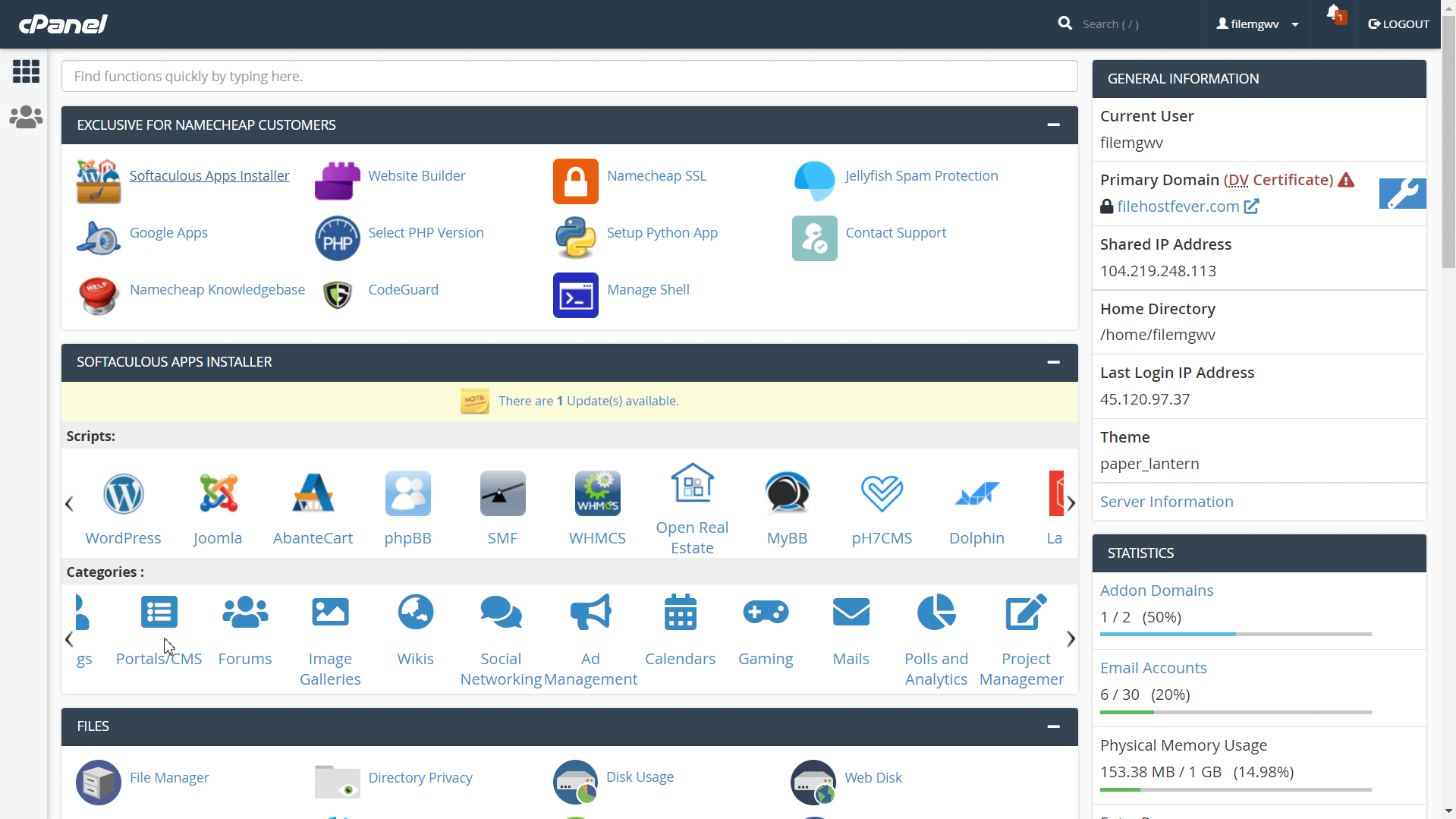
In the control panel, you’ll see a Softaculous symbol. You’ll then be able to access the Softaculous end-user panel by clicking on the Softaculous icon.
Use the cPanel to go to Softaculous.
Select WordPress
Once on the Softaculous end-user interface, you must search for WordPress. Then, Select WordPress.
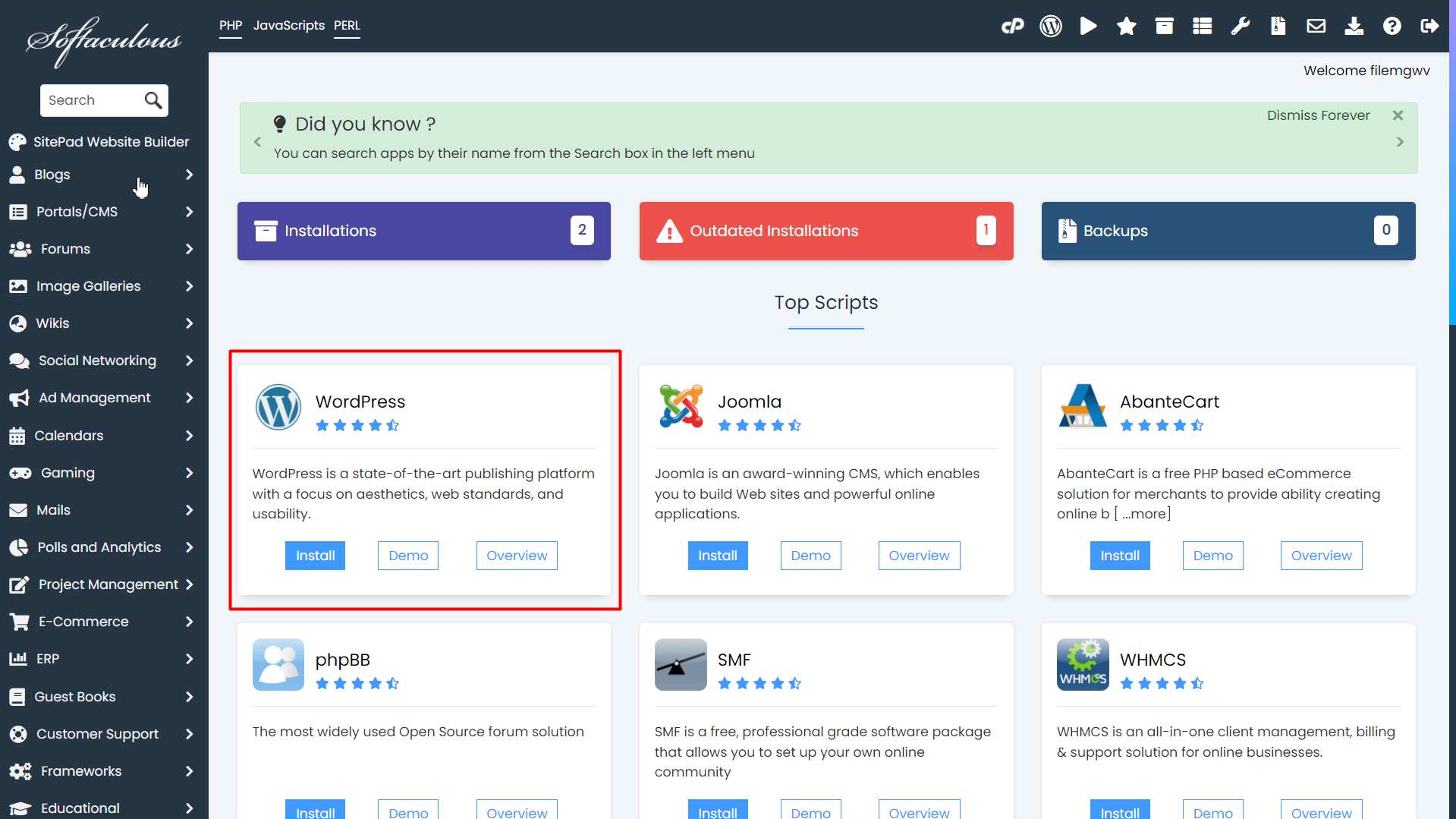
This will take you to the WordPress site. Go ahead and press “Install, to start the setup process.
Filling the Installation Form
You must fill out the form after hitting the Install button. The form requires a lot of information (prefilled by default). However, you can continue installing the default parameters without making any changes.

Select the Installation URL
The domain will be automatically selected, but in case you have multiple domains you can select your desired one.
If you want to install WordPress at the document root, not in a subfolder, leave the In Directory box empty.
Username
Choose a username for the WordPress administrator account.
Password
To protect your WordPress admin account, you must choose a password.
When creating a WordPress administrator account, choose an email address.
Language Selection
Install WordPress in the language of your choice.
Now just fill out the form. Next, click the Install button to begin the installation procedure once you’ve filled out the form. Again, Softaculous will take care of the installation for you.
Advanced Option
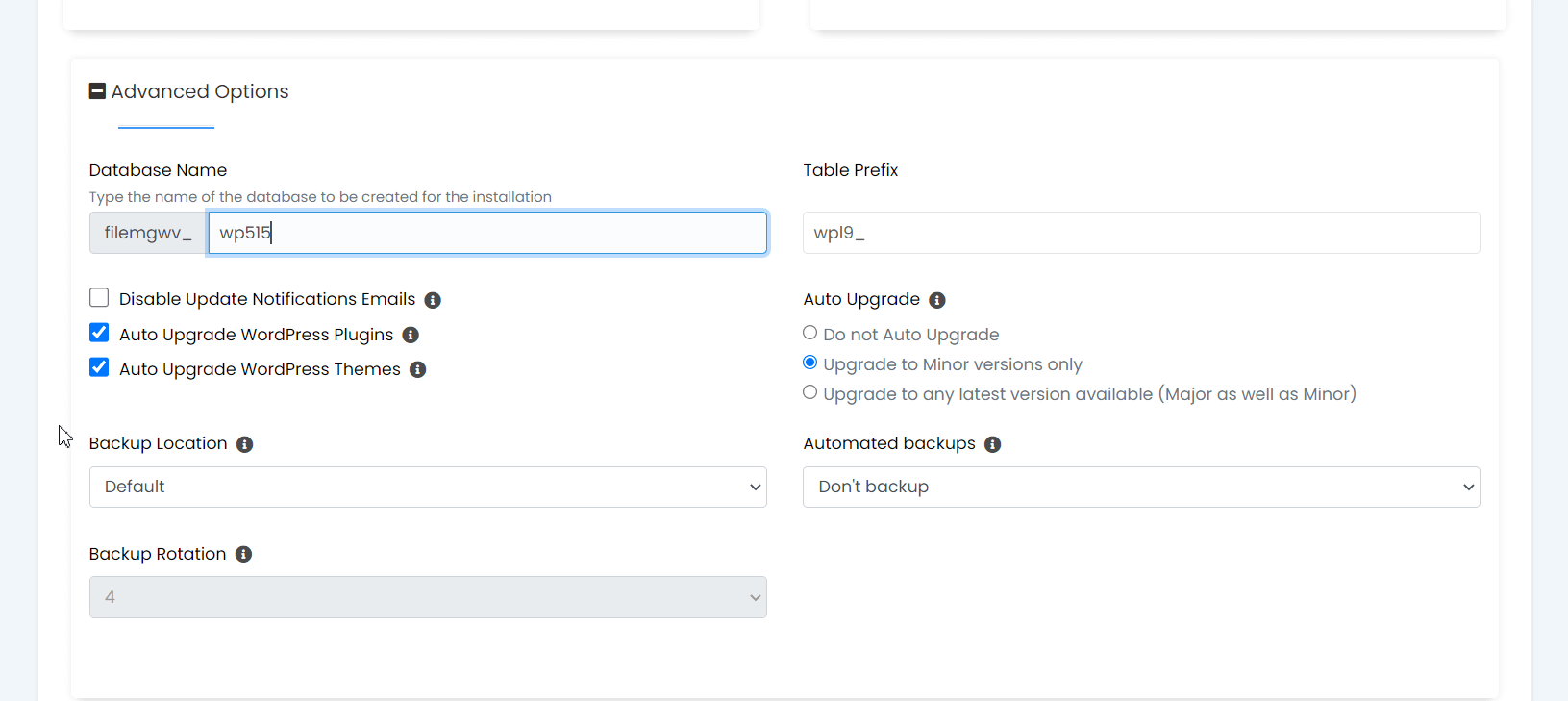
In the advanced option, you can also change the database name and table prefix. You’ll also have the notification settings, auto upgrading and backup options available here.
Installation Completed
When the installation is complete, you will get the success message.
Now, just type the credentials.
Then, you can log into the WordPress admin panel and the WordPress website.
When you use Softaculous to set up and administer your WordPress site, you’ll be able to do anything from installing the software to managing the whole lifecycle of your site.
Installing WordPress Manually Using cPanel
Using Softaculous to install WordPress is the easiest option for those who don’t have the technical expertise to do it themselves. It saves time and is a one-click solution.
We’ll teach you how to install WordPress using cPanel manually as well. So, without further ado, let’s get this started.
Create a New Database
Creating a database is the first step in setting up your WordPress website. Using the MySQL database wizard in cPanel, you can easily do this.
Be careful to choose a strong password when setting the database’s password.
Download WordPress
You may get the WordPress software from WordPress.org to start the installation process.
The wp-config-sample.php file may be found once you have downloaded WordPress and unzipped the downloaded file. Use a text editor to open it. All of your new database credentials must be entered in this file.
You may also make changes to your security keys here.
Encrypting cookies helps to protect login information. In addition, WordPress keys can be used as passwords for your site as an extra security measure.
Change the Default Prefix of the Database
Change the database table prefix when changing the wp-config-sample.php file.
When creating tables in WordPress’s database, the prefix is always wp by default. Many people are aware that this is the default prefix since most rapid installers do not change it.
Replace wp_ with a prefix of your preference. This may be anything you choose; it should be followed only by a hyphen “_”.
Admin User Creation
Also, don’t forget to come up with a unique username. Change the admin that the fast installers choose for you by default. The password should be at least 10 characters long and include a variety of symbols and capital letters.
Enable Brute Force Protection in WordPress
You can protect your site from brute-force assaults with the iThemes Security plugin. As the term implies, brute force assaults occur when anyone (or a programmed bot) continually attempts to predict your username and password until they succeed.
If a person or IP address tries to log in an excessive number of times, WordPress does not instantly block them. As a result, customers repeatedly have unlimited access to attempts until they succeed.
This plugin allows you to choose how many failed login attempts you’ll allow before banning a user for an extended period. You can also prevent anybody from attempting to log in using the administrator user name.
Don’t Forget to Backup
cPanel’s backups feature makes it easy to retrieve them. It’s an easy process. Other plugins, like Duplicator, are pretty effective and make site migrations a lot easier. They’re worth checking out.
Conclusion
Now you have the knowledge of how to install WordPress using cPanel and we hope that the installation went well. We have shared both ways of installing WordPress using cPanel (with Softaculous and manually), to help you understand the process better. Best of Luck!

